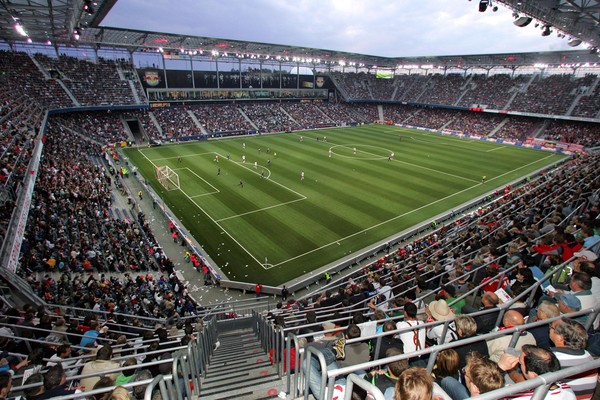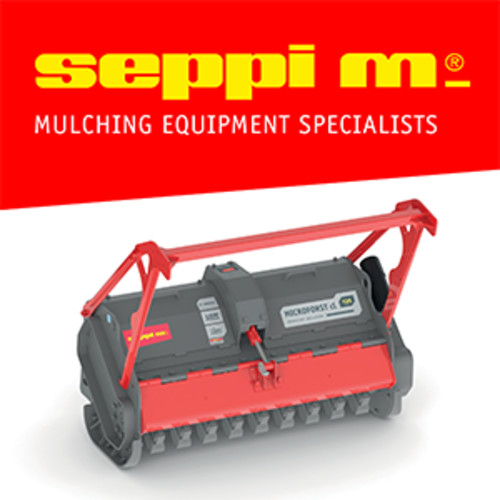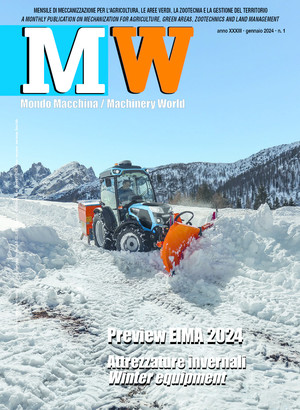
Use and maintenance of synthetic green
The use of synthetic turf began in some American sports facilities in the 1960s. Since then, it has been used not only in sports facilities but in many other applications. There are different types of coverage and for each of them, special maintenance is provided. In many cases, synthetic turfs offer economic and functional benefits, while the hybrid covering, which combines synthetic material and natural grass, is particularly interesting also for professional sport playing fields
Since a few years, synthetic green has not only been used in fields for “big games” such as football, rugby, tennis, golf, etc. but also in other sectors such as play areas for children, multisport courts, urban and private furnishings, swimming pool borders, solariums and walkways in general. As a matter of fact, compared to other coatings, the synthetic carpet has some elements that justify its interest, such as the good exterior appearance, fewer risks of accidents, greater comfort in the game and the walkway, even barefoot. Costs of the installation may be higher but are offset by greater benefits. As an order of magnitude, we can say that, depending on the quality, the cost range is between 20-25 and 40-50 euros per square meter.
In addition to the quality of the synthetic carpet, the elements to be taken into consideration for a successful coverage are careful preparation of the soil and the installation, hygiene, and the correct ordinary and extraordinary maintenance. By observing these rules, the life of the synthetic carpet is around 10 years, at the end of which the carpet can be recycled at a cost of around 140-180 euros per ton.
Quality, structure, and installation
The quality of the synthetic carpet is primarily related to the fibers of the synthetic grass, as they affect its look which must be similar to natural grass, but also safety and comfort of use. In particular, the risk of abrasion or bruising in falls must be very low, while slip resistance must be high. This, to get good performance in the practiced sporting or recreational activity. To all this, it goes added the high stability even with unfavorable climatic conditions, unfortunately very frequent as a result of climate change. The synthetic carpets’ fibers are generally made of polyethylene and their structure ensures flexibility and resistance to trampling and tearing. Very important is the support that is given to the artificial grass, consisting of a fabric in propylene in which the fibers are fitted.
Good performances also depend on the quality of the infill distributed between the fibers, which must ensure, not only the fibers maintenance in an upright position, but also a safe surface able to absorb shocks, comfortable and suitable for the use to which the carpet is intended (for example, in football, rolling and bouncing the ball). There are multiple products in commerce, from those derived from the shredding of end-of-life tyres to transparent polyurethane resin, from organic and inorganic pigments to silica sand of reduced grain size (0.45-1.00 mm). It is, therefore, necessary to know how to choose solutions allowing to obtain the best performances and the least impact for both users and the environment.
For the realization of a coating with artificial grass, the preparation of the bottom is very important and must ensure, together with the good laying of the carpet, also the water drainage. Of course, particular care should be taken to the installation. To this end, specific adhesives are used that allow strong sealing, rapid grip in any atmospheric condition and the perfect junction between the sheets. Now let’s get through some uses.
Football pitches, rugby…
The first generation of synthetic grass for playing fields was born in the US in the late 60s of the last century. Today we are in the fourth generation of synthetic turf systems which, compared to the first, features several innovative solutions, both in terms of structure and longer and more flexible fibers, of the infill, better able to meet to the needs of the game, with performances not different from those provided by natural grass fields, thus ensuring more safety for the players and the environment.
The number of football pitches with artificial grass is constantly rising, not only the minor-league grounds but also those of excellence. There are various reasons. First of all, a longer life. A natural pitch can be used a maximum of 250-300 hours a year whereas an artificial grass pitch can be played over than 1,000 hours a year and can withstand the harshest climates. There is also a significant saving of irrigation water and, above all, reduced maintenance costs.
Low operation and maintenance costs compared to natural grass fields but always essential to ensure not only durability but also performance. More specifically, a good maintenance ensures: extend the life of the surface, as the components and substances harmful to the fibers are removed; maintain gaming performance, as it eliminates dips and restores the conditions of the fibers and the infill; maintain good hygienic conditions, as any bacteria and dust harmful to the coat and the players are eliminated. Maintenance must be performed at different intervals, depending on the period of the year and the level of use. In general, ordinary maintenance with daily-weekly frequency and annual and multi-year extraordinary maintenance are performed.
Ordinary maintenance. The pitch must be watered to cope with periods of prolonged drought and high temperatures. This is because high heat can dry the infill causing a loss of elasticity so that the playing surface hardens excessively making it necessary to decompactify it. The restoration of the conditions can be obtained by performing a simple brushing, manually or with a brushing machine or, in the most serious cases, with a raking with special toothed rakes. The risk of drying occurs when the infill temperature exceeds 35°C. Given that the infill temperature is 20% higher than that of the ambient air, when the temperature reaches 25° C it is advisable to irrigate the pitch.
The soil must then be kept clean with brushing to remove paper, leaves and anything else that has fallen to the surface. To eliminate the material gone into the surface of the infill, the dirt must be sucked in, using special suction machinery operating at a depth of 3-5 mm. The machinery removes part of the infill along with the dirt which is sent to the collection basket while the infill, after screening, falls back to the ground. Brushing off the field without collection is also necessary, to lift the fibers that the trampling action causes to fold and maintain the distribution of the infill. After particularly intense atmospheric events, a control must be carried out on the areas of maximum drainage and, if necessary, restore the infill.
Extraordinary maintenance. Periodic checks must be carried out on the junction lines of the sheets to check if there are any necklines, and the irrigation and drainage system must be inspected. Periodically, the infill must be recharged using the same spreading machines used for blasting natural grass carpets. Furthermore, every 5-6 years, it is advisable to perform partially or totally replace the infill. Periodic disinfection is also necessary to eliminate microorganisms of various kinds that players inevitably bring on the field through their shoes that irrigation and high temperatures help to spread.
Multisport grounds and play areas
The attitude of practicing different sporting activities in the open air and in the same area is spreading especially among young people. There is, therefore, a real demand which however is not always satisfied because of the lack of adequate structures.
Covering with synthetic grass for different sports or playgrounds for children and other is normally done on hard surfaces, such as those that are paved or, on compacted areas. Asphalt is generally the preferred solution, as the installation is facilitated and even the replacement is faster and easier.
Synthetic grass rollers are 2 or 4 meters wide and the length of fibers protruding from the infill is about 20 mm; the height is compatible with different types of games. The implementation substantially does not differ from that of the rolls for football pitches. These fields’ capacity to absorb shocks and falls is rather low. For this reason, when it comes to a children’s play area, a specific shock absorbing underlay is used, often directly integrated into the turf. Once the rolling has been completed, also these turfs need the infill being distributed to keep the fibers upright and to allow the ball to bounce. For multisport fields sandblasting is preferred. The quantity to be distributed depends on the fibers’ density and height. For a height of 20 mm, the quantity varies between 15 and 25 kg per square meter of fine-grained, washed and dried sand.
The quality of the synthetic carpet is assessed based on three criteria: users’ safety in particular children’s, maintenance over time and hygiene and sanitary conditions. Compliance with these criteria is ensured, not only by the turf’s quality and its correct installation but also by adequate maintenance. As for other types of synthetic turfs, maintenance is based on blowholes, brushing, disinfection, and control of the load of the infill. The frequency depends on the use of type and intensity. Generally speaking, blowing and brushing have a monthly frequency, while the verification of the load can be done quarterly.
Carpets with reinforced natural grass
Natural grass turfs combined with artificial grass, also known as hybrid turfs, represent a solution practiced for various sports activities, including professional football, even in the most important stadiums. These turfs combine the quality of natural grass with the resistance of artificial grass. In this way, the grass is less damaged, and it is possible to use it intensively for an annual number of hours well above those of a field with only natural grass (for football pitches up to 1,200 hours a year). This is because the natural grass roots intertwine with the artificial grass fibers, giving the system the positive characteristics of the two types of grass. Maintenance is simple and does not differ from that of natural grass fields.








